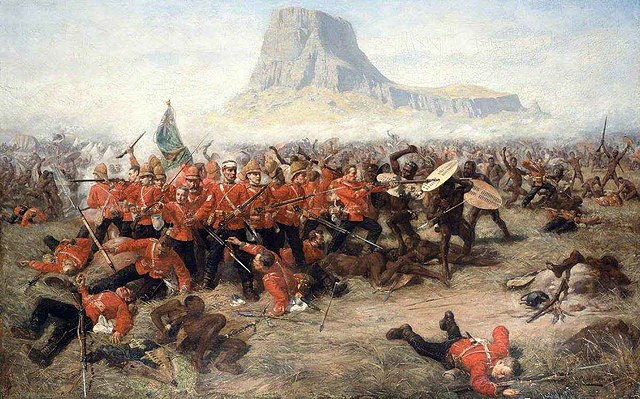The Anglo-Zulu War was fought in 1879 between the British Empire and the Zulu Kingdom. The most famous battle of the War was the Defense of Rorke's Drift.
Following the passing of the British North America Act of 1867 forming a federation in Canada, Lord Carnarvon thought that a similar political effort, coupled with military campaigns, might lead to a ruling white minority over a black majority, which would provide a large pool of cheap labour for the British sugar plantations and mines, encompassing the African Kingdoms, tribal areas and Boer republics into South Africa. In 1874, Sir Bartle Frere was sent to South Africa as High Commissioner for the British Empire to effect such plans. Among the obstacles were the armed independent states of the South African Republic and the Kingdom of Zululand.
Bartle Frere
Photograph of Cetshwayo kaMpande, c. 1875
Hicks Beach
The Last Stand at Isandlwana, painting by Charles Edwin Fripp (1854–1906)
The Zulu Kingdom, sometimes referred to as the Zulu Empire or the Kingdom of Zululand, was a monarchy in Southern Africa. During the 1810s, Shaka established a standing army that consolidated rival clans and built a large following which ruled a wide expanse of Southern Africa that extended along the coast of the Indian Ocean from the Tugela River in the south to the Pongola River in the north.
Drawing of King Shaka (c. 1824)
Military innovations such as the assegai, the age-grade regimental system and encirclement tactics helped make the Zulu one of the most powerful clans in southern and south-eastern Africa.
The Battle of Isandlwana, 1879
King Cetshwayo (c. 1875)







